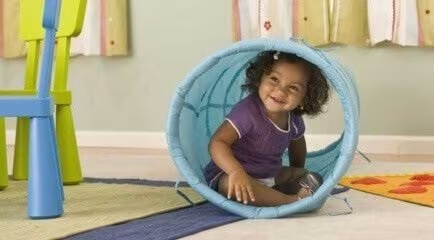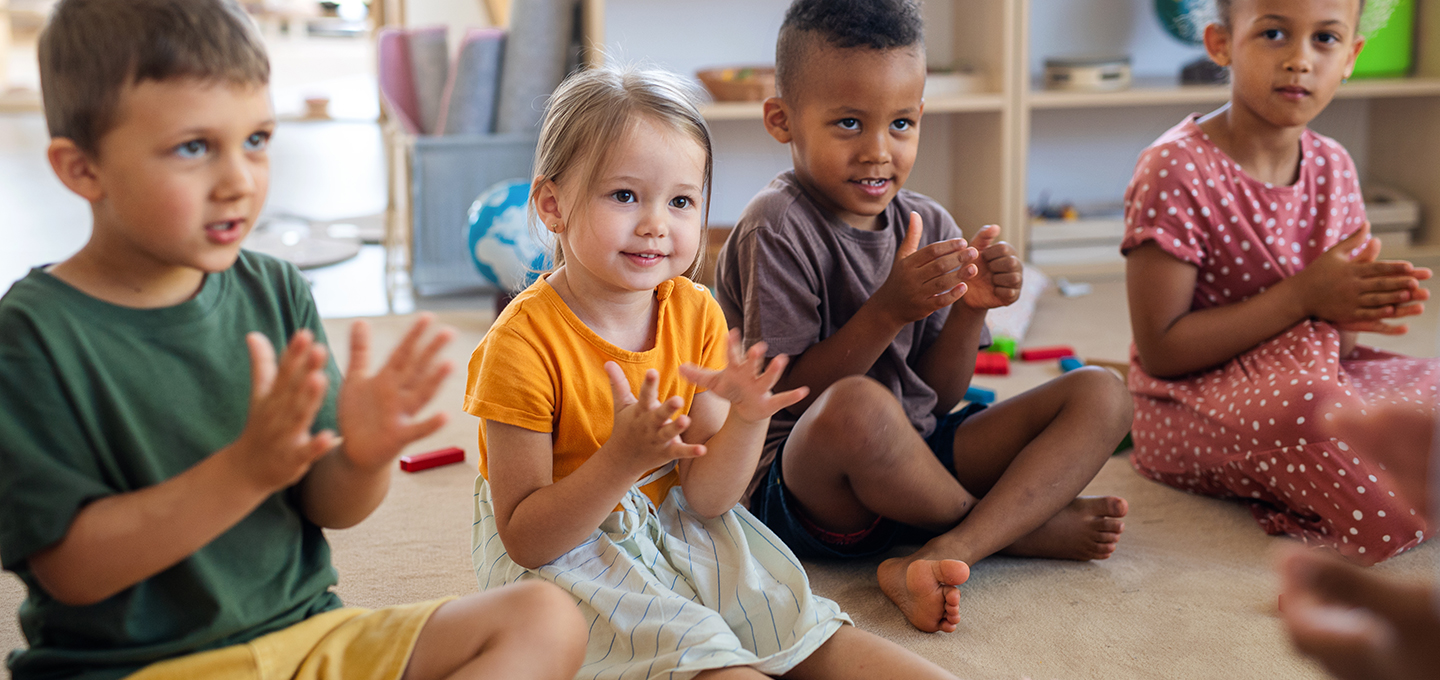
How Play Differs From Child to Child
While there are many similarities in the ways toddlers and preschoolers play, it's the differences that are particularly interesting. One child may be enthralled by a dollhouse, while her cousin prefers trains; a classmate may revel in hitting a golf ball, while a neighbor would rather imagine that same ball to be a magical talisman left by a powerful wizard. Still, no matter how children play, their goal is the same: to understand the world around them and their role in it. By watching your child play, you can find out how she thinks, what she's learning, and how the world — including you — is influencing her. The window into these insights is play.
How Adults Influence Play
Back in the 1970s, psychologist Phyllis Katz conducted what we now call the Baby X experiment. She put three toys in a room: a small football, a feminine doll, and a gender-neutral toy. Then she dressed a 3-month-old in an unadorned yellow jumpsuit and brought a series of adults (the subjects of the experiment) into the room to meet the baby. Some of the adults were told that the infant was a girl named Mary; others were told that the baby was a boy named Johnny. Most of the adults who thought the baby was a girl gave her the doll to play with. Most of those who believed the baby was a boy gave him the football. The Baby X study sparked a lot of heated discussion about gender stereotyping and the need for gender-neutral toys. Nevertheless, when Dr. Katz repeated the experiment 10 years later, she got the same results. What's more, despite great efforts toward gender equality in recent years, if you walk into a typical American preschool, it won't be hard to guess which children will be brushing Barbie's hair and which will be crashing toy trucks.
Nature and Nurture
Part of this preference seems to be genetic, a biological preference from birth for certain types of toys. In other words, there's some truth to the old saying that "boys will be boys" and "girls will be girls." But it's not a cut-and-dried difference between the genders. While many boys will have an affinity for trucks and the like, they're also likely to enjoy — and benefit from — playing with dolls.
Boy Toys Versus Girl Toys: Getting Past Stereotypes
Should you worry if your child desires or plays mostly with toys typically associated with a certain gender? Probably not. But do encourage your youngster to play with a variety of toys. The real issue is not the toys themselves but the underlying skills they help young children master. The fantasy play associated with dolls helps children become sophisticated in skills used in interpersonal relationships, especially nurturing and empathy. These are wonderful and useful skills, as are the mathematical and visual-spatial skills learned from playing with toys like blocks and cars.
Fantasy Versus Reality: Best of Both Worlds
Another way in which children's play differs is whether it's based on reality (such as board games and sports) or fantasy (such as playing house or pretending to travel through time and space). In general, firstborn and only children seem to do more fantasizing, perhaps because they spend more time alone. They're also more likely to have imaginary companions. Having an active fantasy life also seems to help develop, or at least reflect, higher intellectual skills. When your child imagines that a golf ball is a magical talisman and decides what to do with it (save the princess? Fight the dragon? Conjure ice-cream sundaes?), he is using fantasy to consider the implications of choosing different options. Fantasies are also an excellent way for a child to come to terms with things that challenge, frighten, or confuse him. For example, a 3-year-old who is upset by the noise made by a big truck can master his fears by pretending that the wooden block he's holding in his hand is an even bigger and scarier truck.
Reality play, on the other hand, can help a child hone important social skills. A board game gives a preschooler practice taking turns. Early sports activities teach the basics of teamwork and shared responsibility.
Getting Involved
What can you do to help your child try new kinds of play? The simplest thing is to get involved. If you build a dollhouse (a cardboard box is just fine!) and start playing with it yourself, your son won't be able to resist. The same goes for your daughter when she watches you build something with blocks. Or take an imaginary trip to the jungle with a favorite stuffed animal, then bring home a soccer ball and start kicking it around the back yard. No matter what, don't miss an opportunity to play with your child. It can be one of the best parts of being a parent.
Read more about Baby
Related Articles
Join a World of Support
through Pregnancy and Parenthood.
TRACK WITH TOOLS
LEARN WITH EXPERTS
GET REWARDED






